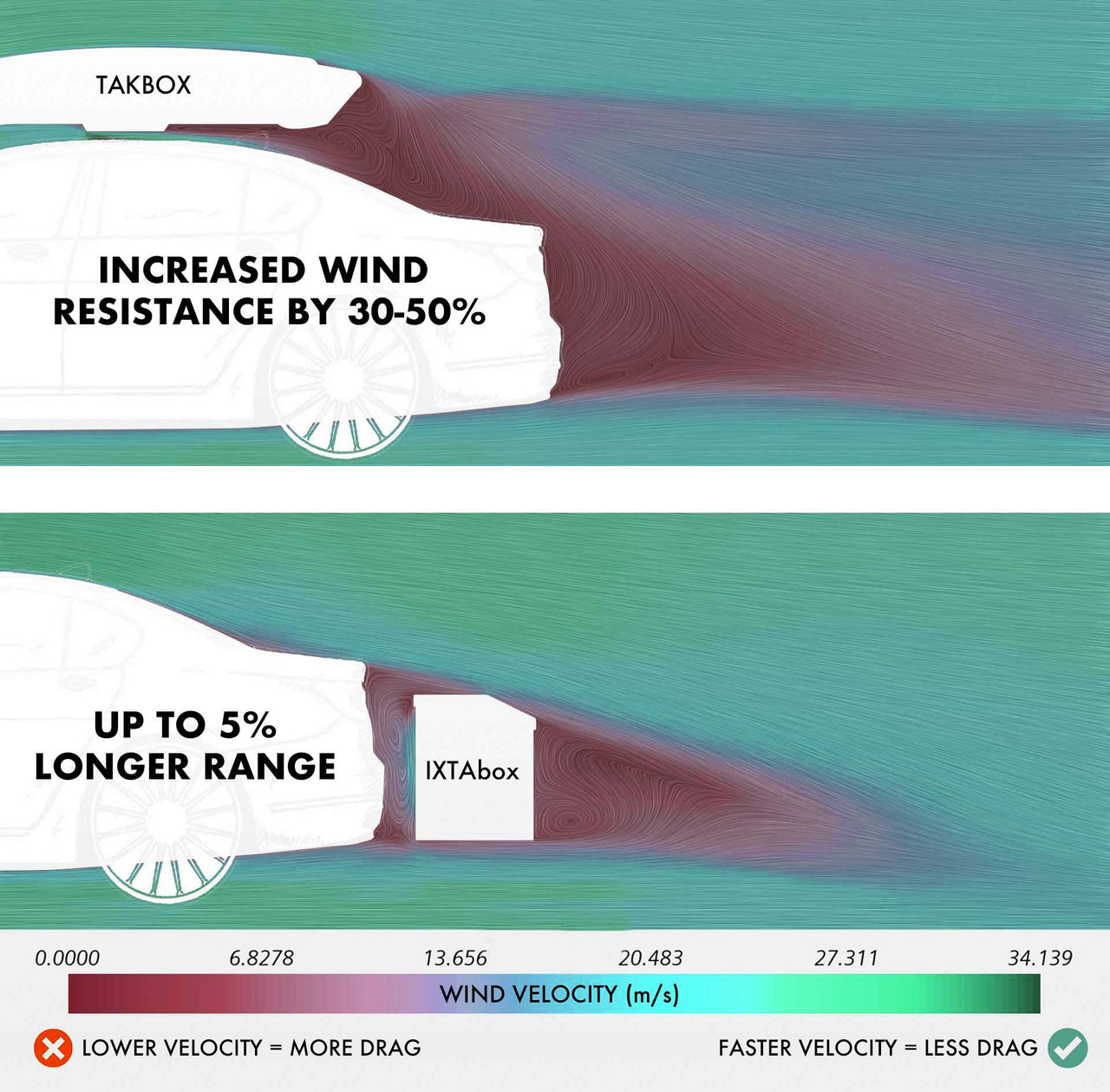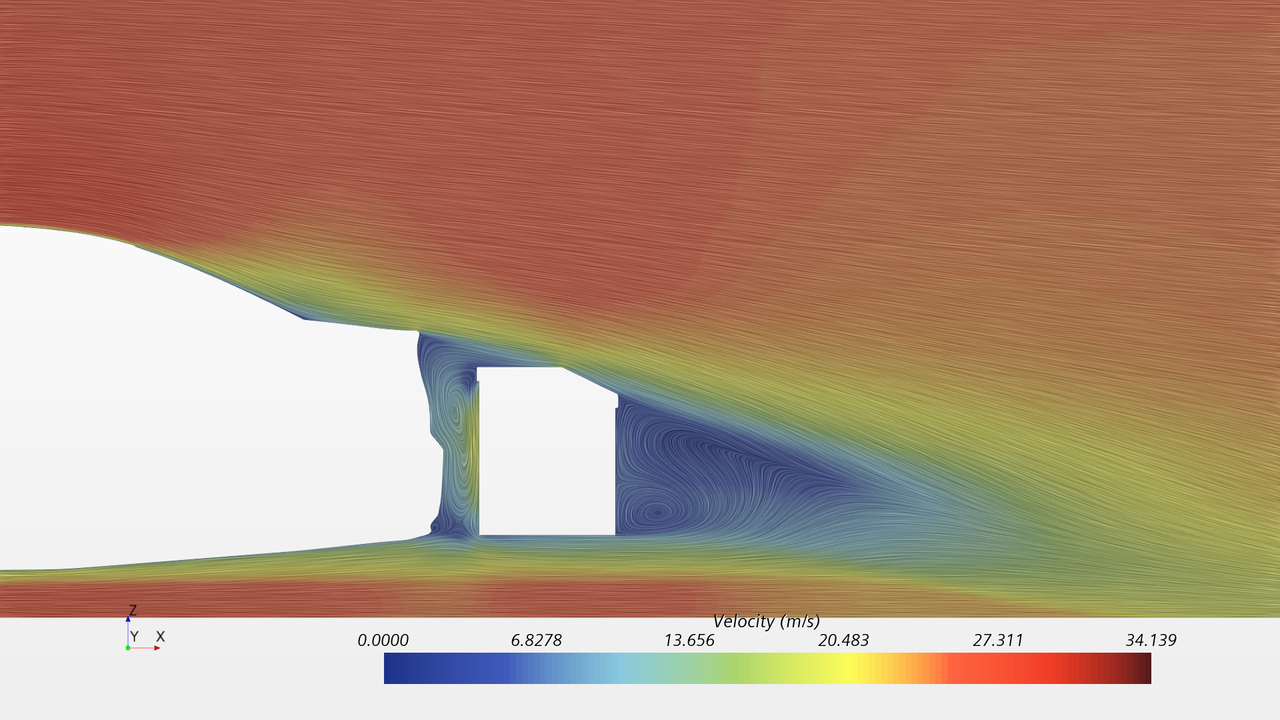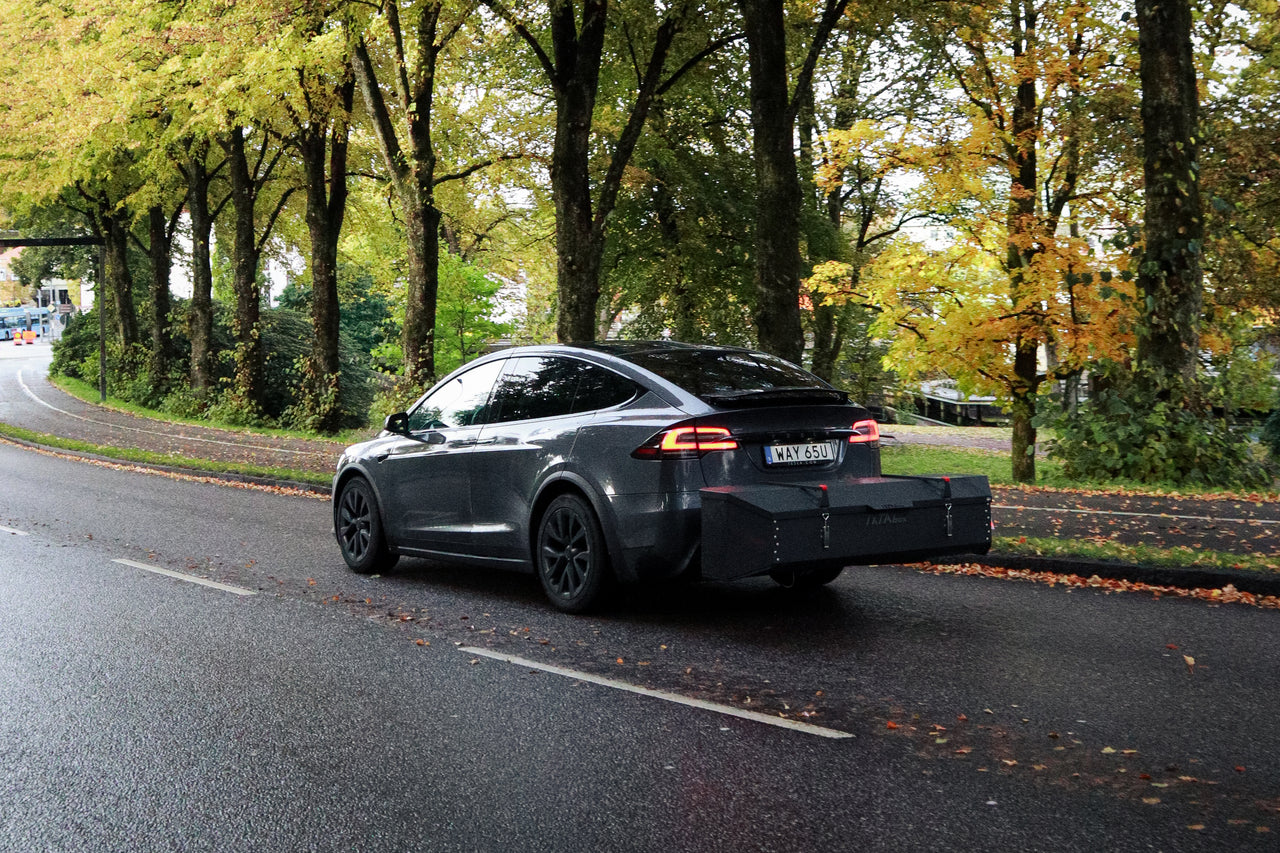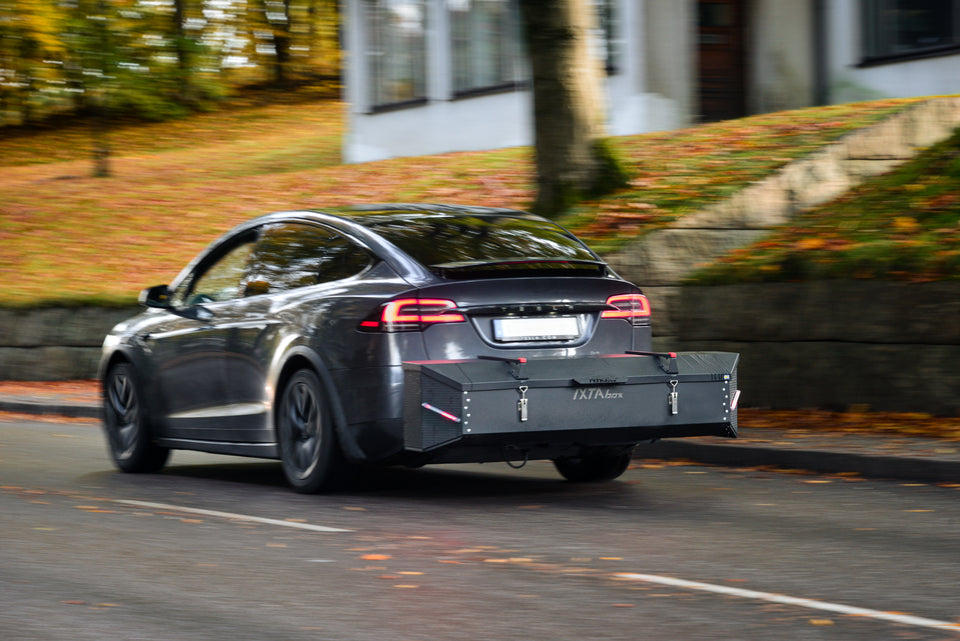Cut Fuel Costs, Extend Range, and Enjoy a Quieter Ride
IXTAbox delivers unmatched aerodynamic performance compared to traditional roofboxes.
With its innovative design, IXTAbox can:
- Reduce Drag: A properly positioned IXTAbox on a vehicle can reduce drag by up to 5% compared to a vehicle without an IXTAbox. Compare this to a roof box that increases drag by 30-50%
- Save Fuel: Achieve fuel savings of up to 10%, depending on vehicle and speed, and extend your range.
- Improve Cabin Quietness: Reduce wind noise for a more comfortable driving experience.
These benefits make IXTAbox the perfect choice for drivers and adventurers who value durability and efficiency.

Proven Superiority Over Roof Boxes
Research conducted by Marcus Sandberg at Chalmers University of Technology shows that:
- Roof boxes increase air resistance by 38-43% (estimated 30-50% in practice depending on the size of the roof box and the car)
- Optimally positioned IXTAbox, box narrower than a car, and the bottom of the box above the base plate reduces air resistance and improves range by up to 5%.
- A non-optimally placed IXTAbox increases air resistance between 3-15% depending on the size and vertical placement of the IXTAbox.
Traditional roof boxes create significant air resistance and high fuel costs due to their poor aerodynamics. The IXTAbox's innovative rear-mounted design changes the car's aerodynamic profile, reducing air resistance and improving the vehicle's range.

How IXTAbox Works
Drag is the air resistance that pushes against a moving object, reducing efficiency. IXTAbox’s design minimises drag by:
- Streamlined Shape: Extending the car's natural aerodynamic slope.
- Diffuser Wing: Reduces airflow between the car and the box.
- Optimal Placement: Positioned at or above the underside of the car creates maximum aerodynamic benefits.
The Impact on Range and Fuel Economy
Wind drag significantly affects fuel consumption and range, particularly for electric vehicles. IXTAbox offers:
- Reduced Fuel Consumption: By up to 10%, compared to the 30% increase with rooftop boxes.
- Lower Speed Impact: At typical speeds (50-100 km/h), IXTAbox performs consistently well.
In real-world tests, the IXTAbox increased fuel consumption by only 2-5% over 50,000 km of mixed driving, proving its real-world effectiveness.

Designed for the Future
As electric vehicles (EVs) grow in popularity, aerodynamics play a critical role in extending range. IXTAbox is designed to meet modern demands for functionality and sustainability by:
- Maximising Efficiency: A perfect solution for EV owners who want to transport equipment without sacrificing range.
- Expanding Practicality: The IXTAbox enables smaller vehicles to carry more, while maintaining environmentally friendly performance.



